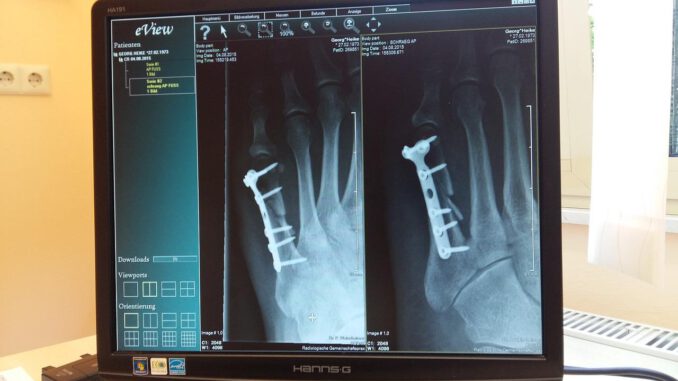
The irradiation of Heaven and Earth continues to accelerate, as SpaceX marches ever more quickly toward a constellation of 42,000 satellites. It launched 53 satellites on May 13; 53 more on May 14; and 53 more on May 18. And it has reached agreement with UK-based OneWeb, which plans its own fleet of 7,088 satellites, on how to share the skies. OneWeb will sell its services to telecommunications providers, governments, airlines, and ships, while SpaceX will sell to individuals.
OneWeb, which was launching its satellites from the Russian-operated Baikonur Cosmodrome in Kazakhstan, has been forced to temporarily halt its launches because of the war in Ukraine. But it is expected to resume launching satellites shortly. As part of its agreement with SpaceX, OneWeb’s satellites will be launched from the United States on SpaceX’s Falcon 9 rockets going forward.
Honey bees, birds, whales and trees the world round, their future in peril, are depending on the human race to wind down, and get rid of, their satellites, their antennas, and the devices that are creating the demand: their mobile phones. And people from many countries are beginning to organize together to spread that message widely. Stay tuned.
OSTEOPOROSIS AND BROKEN BONES
A reader alerted me to research proving that electromagnetic radiation causes osteoporosis. A 2016 study in Turkey by Kunt et al. found that electrical workers had significantly lower bone mass density, as well as an increased tendency to severe osteoporosis, than a control population. The average age of both groups was 38.
Sieroń-Stołtny et al., in an astounding experiment in Poland, kept 10 young rats in a plastic cage for 28 days and put one Nokia 5110 mobile phone underneath the cage. The phone operated in silent mode and was only turned on for 15 seconds every half hour between 9:00 a.m. and 1:00 p.m. and again between 2:00 p.m. and 6:00 p.m. In other words, the animals were exposed for a total of four minutes per day for 28 days. Ten control animals were in an identical cage but without a mobile phone beneath it.
At the end of the experiment, the rats were sacrificed and examined. The vertebrae of the exposed rats weighed on average 12.5% less than the vertebrae of the unexposed rats. The leg bones of the exposed rats had on average 12.44% less calcium and fractured more easily. Most of the calcium loss occurred during the first week of exposure. Blood analysis also indicated that collagen was lost from the bones.
In 2013, Ahmet Aslan et al., in Turkey, exposed 30 five-month-old rats, whose legs had been broken, to mobile phone radiation for 30 minutes per day, 5 days per week, for 8 weeks. At the end of 8 weeks, healing was significantly delayed in the exposed compared to the unexposed rats.
In 2011, Fernando Saraví, in Argentina, found that carrying a mobile phone on your hip causes osteopenia in that hip. Men who carried their phone on their right hip had lower bone mass density in their right hip than in their left hip. Men who carried their phone on their left hip had lower bone mass density in their left hip.
And from readers:
Marie-Reine, in Québec, broke her left humerus in three pieces on April 2. A friend of hers in Nova Scotia broke her humerus in March.
Jackie, in Wisconsin, writes that she developed osteoporosis after she moved into a house with radio towers outside her bedroom window.
Leonore, in Massachusetts, writes: “A friend who never broke a bone in his life, recently broke his femur when he tripped playing basketball.”
Sara, age 55, wonders why she suddenly became susceptible to breaking bones in 2018. She broke a bone in her right foot that year, and then in 2021 she broke a bone in her left foot. “The thing that was so odd about both of these incidents is that I did almost nothing to provoke it. In one case I was trying to keep my sandal from getting sucked off my foot by the current during a rafting trip. All I was doing was flexing my foot. The second time I just tripped while inside my house, walking on a flat surface and I ended up with a fracture.”
Denise, age 66, broke her hip on April 19. Her father and mother, in their eighties, both broke hips several years ago, and this March her mother broke her other hip.
Marilyn, in California, writes that “Despite a strong exercise history and a strong healthy diet, I have been plagued with two broken hips (femur necks) and a fractured shoulder” since “a cluster of cell towers were installed 100 feet from my bedroom.”
WIFI ROUTERS AND MICROWAVE OVENS
Don, in Idaho, writes: “This year we relocated our seedlings next to the router in our pantry for convenience. We have experienced an across-the-board failure with them. Skinny plants, some of them dead. This includes tomato seedlings. Your email really struck a chord with me. Thank you!”
Carolyn, in France, writes: “This is the first time I have ever heard anyone else say that they had stomach pain from eating restaurant food that had been microwaved! I have realized the same thing — that foods that I normally eat with no problem, cause me stomach pain, often severe when I eat it in a restaurant in which it has most likely been cooked or reheated in a microwave. I can usually sense it with the first bite I take as well — it just doesn’t feel right… I have to be so careful about ordering things that will be definitely cooked fresh, and request that nothing be heated in a microwave. Sometimes I forget though, and then I pay for it.”
SMART BIRDS
Wildlife biologists routinely place radio tracking devices on birds, mammals, snakes, fish, whales, butterflies, bees, and anything else that moves in order to study them — completely ignoring all the studies showing that the radiation causes weight loss, reproductive failure, increased mortality, and even altered sex ratio in offspring. The results of these studies are shocking. For example, Swenson et al. experimented with moose calves in Sweden. Calves with plain ear tags and calves without any ear tags had equal mortality rates — about 10 percent — while calves with ear tags that contained radio transmitters had 68 percent mortality.
Now, some birds are fighting back. In Australia, a population of magpies, tormented by their GPS tracking devices, figured out how to remove them from one another and have completely rid themselves of these instruments of torture.
Scientists had trapped five magpies — one adult male, two adult females, and two juveniles — and had attached GPS devices to them in order to study their movements. These devices could only be released — so they thought — by a magnet that the birds would encounter at a feeding station. But it was not to be. After being freed, one of the juveniles was observed to be pecking unsuccessfully at its GPS device. Not to worry: an untagged adult female swooped down and came to its aid. She pecked at the harness holding the device in various places, and within 10 minutes had discovered its only weak spot — a one-millimeter section — and released it. Within one hour after being trapped and fitted with the device, the bird was free
of it. Other magpies were observed helping each other out of the devices, and two days later none of the birds were tagged any more.
The birds were not re-tagged. Ornithologist Dominique Potvin, the leader of the study, said: “They clearly don’t like the trackers, so we have decided it’s not very ethical to continue to try to track something that doesn’t want to be tracked.“
Donations to support our work are needed. The Cellular Phone Task Force is a 501(c)(3) nonprofit organization, and donations from U.S. residents are tax- deductible. Our Tax ID Number is 11-3394550
P.O. Box 6216Santa Fe, NM 87502, USA
phone: +1 505-471-0129 info@cellphonetaskforce.org








